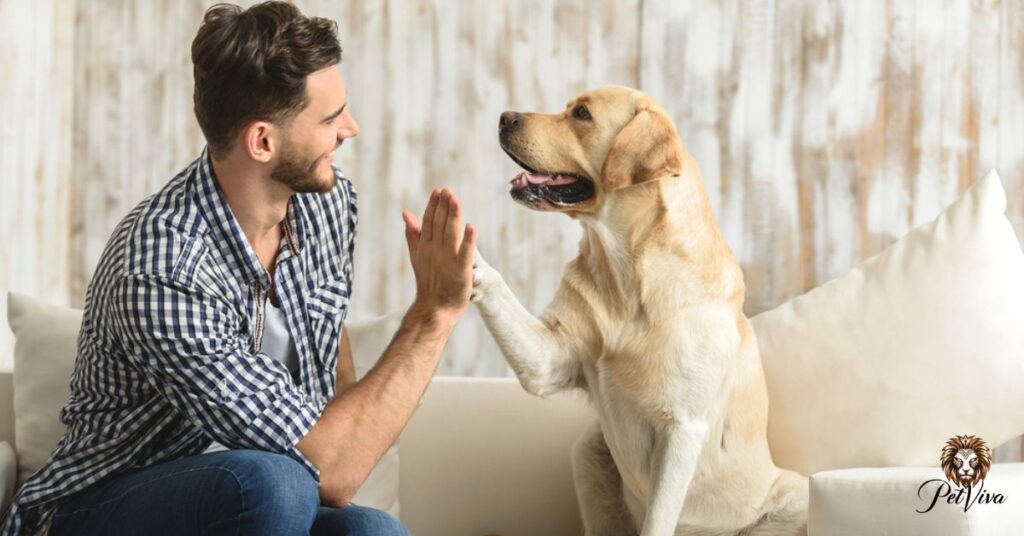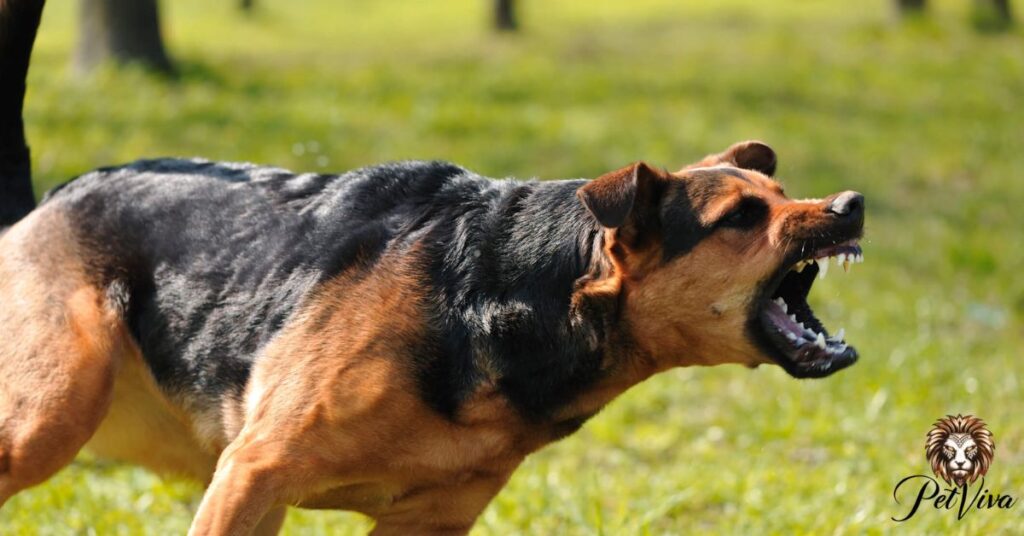If a dog shows worrisome body language stay calm and avoid startling it. Slowly back away and give the dog space until it calms down.
What should you do if a dog is displaying concerning body language Ever seen a dog acting strange? Stay cool, avoid quick moves, don’t engage. Back off slowly, give space let them feel safe. When a dog’s body language is off it’s time to play it safe. cues can prevent a potential scrape. Remember calm and caution pave the way for a peaceful escape.
If a dog shows worrisome signs, stay calm and avoid sudden movements. Give the dog space and time to calm down without approaching it. Assess the situation carefully before deciding on your next steps.
How a Dog’s Body Language Can Indicate a Coming Attack
A dog’s body language often serves as a precursor to potential aggression, providing vital clues to its emotional state. When a dog feels threatened or fearful, it may exhibit signs such as raised fur, a tense body, and direct eye contact. These signals are the dog’s way of communicating discomfort or a readiness to defend itself.
Recognizing these warning signs is crucial for preventing potential attacks. If you observe a dog displaying concerning body language, it’s essential to remain calm and avoid any actions that could be perceived as threatening. Giving the dog space and avoiding direct eye contact can help de-escalate the situation and reduce the risk of aggression.
Also read this: WHY SCHNAUZERS ARE THE WORST DOGS? 20 REASONS (2024)
Understanding Canine Communication

Understanding canine communication is vital for building positive relationships with our furry friends. Dogs use a variety of body language cues to express their feelings and intentions. For example, a wagging tail usually indicates happiness or excitement, while a tucked tail may signal fear or submission.
Paying attention to facial expressions and vocalizations can provide valuable insights into a dog’s emotional state. A relaxed face with a slightly open mouth suggests contentment, whereas bared teeth or growling may signify aggression or discomfort.
Also read this: WHEN TO EUTHANIZE A DOG WITH ARTHRITIS
Warning Signs of Aggression
Recognizing warning signs of aggression in dogs is essential for staying safe and preventing potential conflicts. Common indicators include raised fur along the back, a stiff body posture, and direct eye contact. Growling, snarling, or baring teeth are also clear signals that a dog may be feeling threatened or ready to attack.
It’s crucial to take these signs seriously and avoid provoking the dog further. Backing away slowly, avoiding sudden movements, and giving the dog space can help de-escalate the situation. If you encounter a dog displaying aggression, it’s best to remain calm and refrain from making direct eye contact or attempting to assert dominance.
Taking Preventive Measures

Taking preventive measures can help minimize the risk of dog-related incidents and ensure the safety of both humans and dogs. One essential step is to educate yourself and others about dog behavior and body language. Learning to recognize signs of stress, fear, or aggression can enable you to respond appropriately and avoid potentially dangerous situations.
Another preventive measure is practicing responsible pet ownership, including proper training, socialization, and supervision of dogs. Training your dog to obey basic commands and socializing them with people and other animals can help prevent aggressive behaviors from developing.
Determining Liability for Dog Attack Injuries
Determining liability for dog attack injuries involves assessing various factors to determine who is responsible for the incident. In many cases, the dog’s owner may be held liable for the actions of their pet. This responsibility typically extends to situations where the owner knew or should have known about the dog’s aggressive tendencies.
However, liability may also fall on other parties, such as property owners or caregivers, depending on the circumstances of the attack. For example, if a property owner fails to secure their premises properly, resulting in a dog escaping and causing harm, they may share liability for the injuries.
Were You Attacked by a Dog in Wyoming?

If you were attacked by a dog in Wyoming, it’s essential to understand your rights and options for seeking compensation. Wyoming has specific laws governing dog attacks and liability, which may vary depending on the circumstances of the incident. Consulting with a knowledgeable personal injury attorney who Wyoming’s laws can help you navigate the legal process and determine the best course of action for your case.
In Wyoming, dog owners are generally held responsible for the actions of their pets, especially if the owner knew or should have known about the dog’s aggressive tendencies. Whether you sustained physical injuries or emotional trauma from a dog attack, you may be entitled to compensation for medical expenses, lost wages, pain and suffering, and other damages.
Why Understanding Dog Body Language Matters?
Understanding dog body language is crucial for safe and positive interactions with our furry companions. Dogs communicate primarily through their body movements and facial expressions, providing valuable insight into their emotions and intentions. By learning to interpret these cues, we can better understand when a dog feels comfortable, fearful, or agitated, allowing us to adjust our behavior accordingly.
This understanding helps prevent misunderstandings and potential conflicts between humans and dogs. By recognizing signs of stress or aggression early on, we can take appropriate steps to diffuse tense situations and ensure the safety and well-being of both ourselves and our canine friends.
How Dogs Communicate Through Body Language?
Dogs rely on body language to express themselves and communicate with humans and other animals. They use a combination of gestures, postures, and facial expressions to convey their emotions and intentions. For example, a wagging tail often indicates happiness or excitement, while flattened ears might signal fear or submission.
A dog’s body language is essential for building a strong bond and fostering positive interactions. By learning to interpret their cues accurately, we can respond appropriately to their needs and avoid misunderstandings. Paying attention to their signals helps us create a safe and comfortable environment for both ourselves and our canine companions.
Interpreting Relaxed vs. Alert Dog Body Language

Interpreting a dog’s body language is crucial for understanding their mood and intentions. When a dog is relaxed, they typically exhibit loose body movements, with a gently wagging tail and soft eyes. Their mouth may be slightly open, and they might appear content and at ease.
On the other hand, an alert dog displays signs of heightened awareness and readiness. Their body becomes more tense, and their ears may perk up to listen intently. Their tail might stand erect, and they may fixate on something that has caught their attention, indicating a state of heightened alertness or curiosity. By recognizing these subtle cues, we can better respond to our furry companions and ensure their well-being in various situations.
Relaxed Signals Indicate Your Dog is at Ease
When your dog is relaxed, it’s a sign that they feel safe and comfortable in their environment. You may notice them breathing slowly and deeply, with their body appearing loose and relaxed. Their eyes may be half-closed, and they may exhibit a relaxed facial expression, perhaps with their mouth slightly open and their tongue hanging out.
Relaxed body language in dogs often accompanies behaviors such as lying down, rolling over, or stretching out leisurely. They may also seek out cozy spots to rest, such as a sunny patch of grass or a comfortable bed. Observing these relaxed signals in your dog can be reassuring, indicating that they are content and enjoying their time with you.
Alert Signals Show Your Dog is On Guard
When your dog displays alert signals, it indicates they’re on high alert, assessing their surroundings for potential threats or changes. Alert dogs often have a more upright posture, with their ears perked up and their body tense. Their eyes may widen, and they might focus intently on specific stimuli, such as a sound or movement.
You may notice alert behavior’s like standing tall, raising their head, or even emitting low growls as a warning sign. Their tail may be held high and stiff, signaling a readiness to react quickly. Being vigilant to these signals can help you understand when your dog perceives a potential threat, allowing you to respond appropriately to ensure their safety and well-being.
Responding to Relaxed vs. Alert Signals
Responding to your dog’s signals is essential for maintaining a harmonious relationship. When your dog appears relaxed maintain a calm demeanor to reinforce their sense of ease. Offer them space and avoid overwhelming them with attention allowing them to enjoy their relaxed state.
However, when your dog displays alert signals, remain attentive and assess the situation for potential triggers or threats. Respond calmly to reassure your dog and prevent them from feeling further stressed. Be prepared to guide them away from perceived dangers and provide comfort as needed to alleviate their concerns.
Reading a Dog’s Tail, Eyes, Ears and More
- Observe your dog’s tail for clues about their emotions and intentions.
- A wagging tail usually indicates happiness or excitement.
- A tucked tail may suggest fear or submission.
- Watch your dog’s eyes for signs of expression.
- Wide eyes may indicate alertness or anxiety.
- Soft, relaxed eyes often signal contentment.
- Pay attention to your dog’s ears.
- Perked-up ears may indicate attentiveness or curiosity.
- Relaxed ears typically suggest calmness and comfort.
A Dog’s Tail is Very Expressive
A dog’s tail is like a furry mood barometer expressing their emotions without words. When wagging gently, it signals happiness and excitement. But a tucked tail might indicate fear or discomfort. Paying attention to your dog’s tail can give you valuable insights into how they’re feeling, helping you respond appropriately to their needs.
Moreover, the position and movement of a dog’s tail can vary depending on their mood. A high-held tail might suggest confidence or alertness while a low-held tail could signal submission or uncertainty. By understanding the nuances of your dog’s tail language, you can strengthen your bond and ensure a happier more harmonious relationship.
Frequently asked question
What to do when a dog is displaying body language?
Stay calm, assess the situation, and respond appropriately based on the dog’s signals.
What body language would a dog display when it should be approached with caution?
A dog showing signs of stiffness, raised hackles, or direct staring should be approached with caution.
What body language are dogs uncomfortable?
Dogs may display discomfort through behaviors like yawning, lip licking, or avoiding eye contact.
How do you communicate with dogs body language?
Communicate with dogs using body language by using gentle movements, maintaining eye contact, and observing their responses.
Conclusion
What should you do if a displaying concerning body language? Responding appropriately to a dog displaying concerning body language is crucial for both your safety and the well-being of the dog? By staying calm and avoiding sudden movements, you can prevent the situation from escalating. Giving the dog space and refraining from approaching until it feels more at ease is key to avoiding potential aggression.
Seeking professional assistance from a certified dog trainer or behaviorist may be necessary to address any underlying issues causing the dog’s distress. Remembering to respect the dog’s signals and understanding its body language can prevent potential conflicts and foster a safer environment for everyone involved. Ultimately by responding thoughtfully and sensitively to a dog’s concerning body language you can promote positive interactions and build trust with our canine companions.







